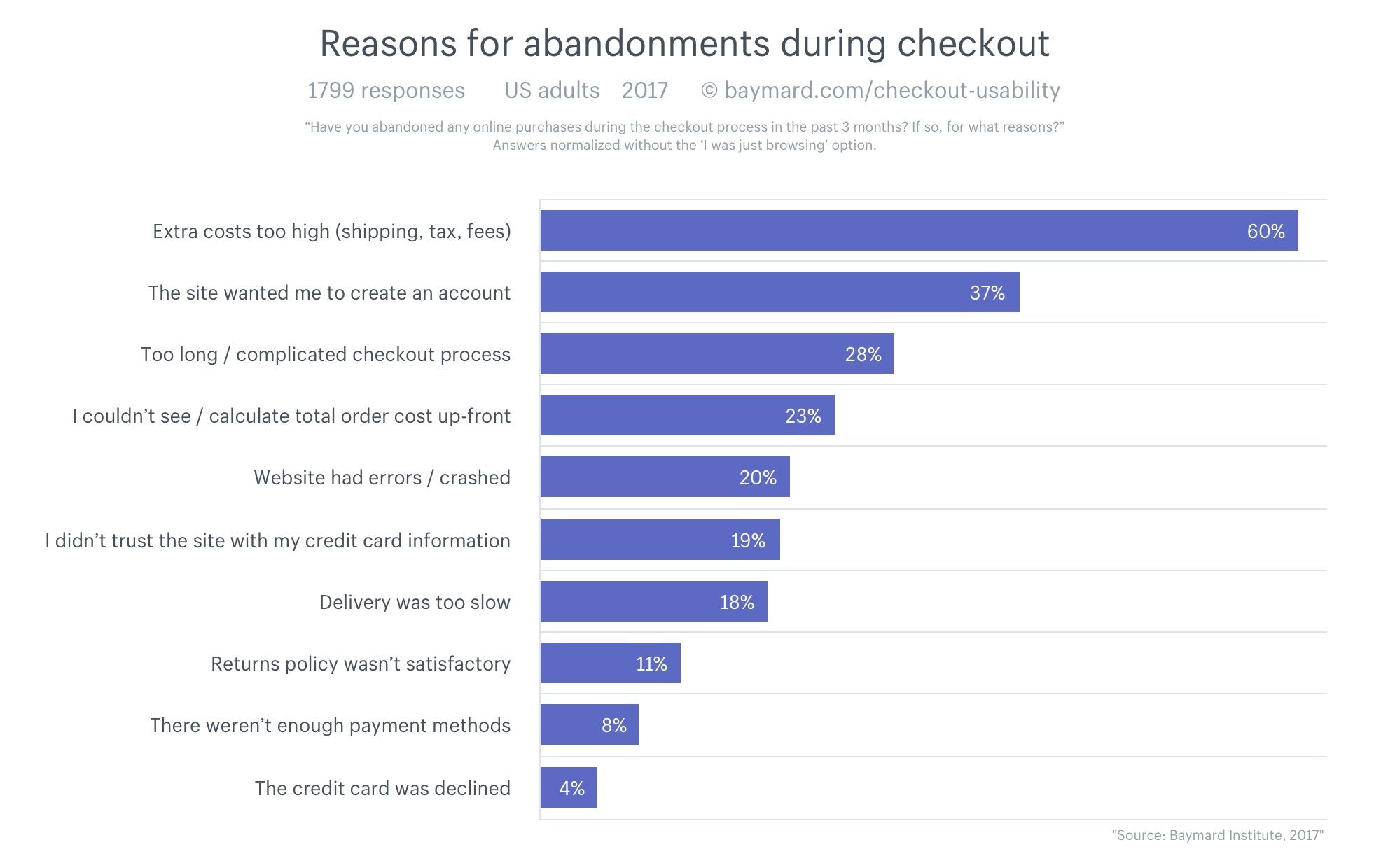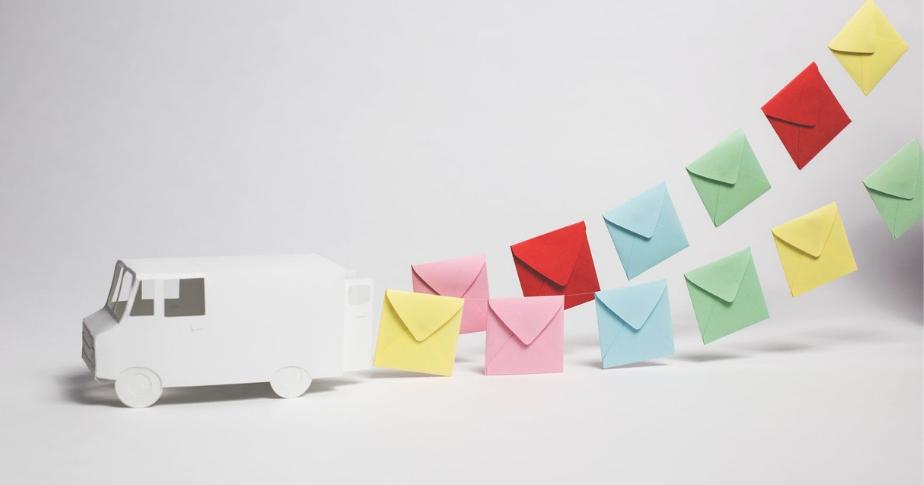One of the primary ways email marketing provides outsized value is through scaling personalized messages. Nowhere is this more apparent than with automated emails sent to customers post-purchase.
Of the emails you can send, transactional emails are always treated as an afterthought. That’s unfortunate, because every email you send to customers is an opportunity to provide value and drive additional sales.
- What is a transactional email?
- The shopping cart abandonment email
- The order confirmation email
- The shipping confirmation email
- The customer feedback email
- Post-purchase touchpoints are crucial
What is a transactional email?
A transactional email is an automated message triggered after a customer makes a purchase, and usually contains details about their order, expected delivery times, and other related information. Transactional emails are 1:1 broadcasts rather than mass emails sent to a group of users, like a newsletter.
There are four key types of transactional emails: cart abandonment, order confirmation, shipping confirmation, and soliciting customer feedback. Each of these emails has the potential to make a significant impact on customer satisfaction and retention.

Free Ebook: How to Grow Your Ecommerce Business with Email Marketing
Whether you're just getting started or dreaming up your next big campaign, this email marketing guide will provide you with insights and ideas to help your business grow.
Get our Email Marketing guide delivered right to your inbox.
Almost there: please enter your email below to gain instant access.
We'll also send you updates on new educational guides and success stories from the Shopify newsletter. We hate SPAM and promise to keep your email address safe.
1. The shopping cart abandonment email
Baymard Institute shows the average shopping cart abandonment rate sits at nearly 70%. That's a lot of revenue left unrealized. What can you do to get those customers back to your checkout page to complete their order?

Shortly after (usually within 12–24 hours) a customer enters their information—usually their email address or a customer account—and leaves their item(s) in their shopping cart without purchasing, send them a reminder that they still have items waiting in their cart.
Ideally, you’ll include an added incentive to complete the purchase. Here's a great example from Niyama Sol:

While plain text can be effective for cart abandonment emails, you may want to visually show the products a customer added to their shopping cart, paired with copy that nudges them back to your store. Remind customers that they were just moments away from a completed order, and focus on the reasons why they’d consider buying the product in the first place. Stay personal and consider adding incentives like discounts or same-day shipping to tilt the scales.
Würkin Stiffs sends a cart abandonment email with a 20% discount to encourage shoppers to finish checkout.

Ways to improve cart abandonment emails:
- Put the main message in text format so customers will see it right away without having to enable images. Include a link back to their shopping cart so they can easily complete the transaction.
- Remind the customer about item(s) in their cart that are awaiting purchase so they can get excited about them again. Highlight specific features and show off high-quality product photos.
- Communicate a specific incentive to return to their cart, such as free shipping or discounts. If an item is running out of stock, let customers know as a courtesy while also instilling a sense of urgency.
- Finally, use a clear, compelling call-to-action. Keep it concise and limit yourself to a single CTA. Multiple CTAs can distract from the action you really want customer to take: to complete their purchase.
💡 Tip: When offering incentives in your cart abandonment emails, think carefully about offering a coupon or discount. You may end up training customers to put items in their shopping cart and leave so they can get money off of every purchase.
2. The order confirmation email
According to the book Marketing Metrics by Paul Farris, the probability of selling to an existing customer is 60–70%. Logically, once a customer has made a purchase they’ve already validated their interest in your products, there's a greater chance you can encourage them to buy again.
One way to do this is to use your order confirmation email as a marketing opportunity. First, however, you’ll want to carefully consider when it’s the right time to sell to an current customer. Selling too soon after the sale may sour your first impression, but selling too late means you risk having customers move on—the best time to sell is when your brand is top-of-mind.
Typically, you’ll want to send the email 12–24 hours after your customer enters their information and abandons their item(s). Often customers just want to get to the last step in the checkout so they can see the final charges with shipping costs included or they simply get distracted from their shopping experience.
For repeat customers, try suggesting related products, or include the option for an add-on or accessory to their purchase before it ships. Dollar Shave Club sends an order confirmation email to monthly subscribers before their package ships, inviting customers to add more items to their box.

Regardless of how long the recipient has been a customer, order confirmation emails should reassure shoppers their purchase is complete and on the way while providing ways to extend the relationship with your business.
3. The shipping confirmation email
Shipping confirmation emails are valuable because your customer is already excited about receiving their order—their anticipation and excitement means they’re likely to engage with the email, and may consider gifting your product(s) to their friends and family if prompted.
They’re also an underused opportunity to get creative and delight your customers. This email from Native is a stand-out example:

Image credit: BKW Partners
You can think outside the box in terms of converting more customers, too. How can you use the shipping confirmation email to drive action and deepen a customer’s relationship with your brand? Here’s one idea: Instead of asking customers to make another purchase for themselves, encourage them to buy a gift for someone else.
Tradesy uses the shipping confirmation email to promote their referral program, encouraging customers to gift their friends and family $20 off.

Image credit: Really Good Emails
Shipping confirmation emails are especially effective when the CTAs are personalized to the customer’s purchase. If, for example, a customer purchases a pair of men’s slacks, product recommendations could focus on matching shirts and ties, instead of something less relevant like a full suit or women’s clothing.
Ways to improve shipping confirmation emails:
- Make it easy for your customer to track their order. Include the expected delivery date and tracking number linked to the shipping company so people can click once to see exactly where their order is in the shipping process.
- Suggest that the customer refer a friend by forwarding a link to the product they purchased. Incentivize word-of-mouth marketing by implementing a referral program with rewards.
- Include product suggestions that match a customer’s purchase. Make sure you’re asking shoppers to purchase something they’ll actually be interested in.
4. The customer feedback email
Many brands neglect the customer feedback email at their peril. Soliciting feedback can be as simple as sending a survey or a single question about the customer’s shopping experience. You’ll want to send these requests after a customer has presumably received and used the product they ordered.
Here's an example survey from Death Wish Coffee:

While Death Wish sends the customer to a third-party survey tool for feedback, Taylor Stitch includes the full survey in the email itself.

Source: Really Good Emails
You can also send customers to a survey available on your store. This makes it easy to prompt a satisfied customer to start shopping once their review is complete.
What about those who are less than happy with their previous purchase? Follow-up is essential here—first to prompt a response and next to figure out how you can improve the experience for future customers.
Ways to improve customer feedback emails:
- Focus on customer satisfaction, not sales, so you can get your customer’s thoughts on their purchase. Track these metrics over time and look for actionable insights that you can implement in your business to improve over time.
- Place the review / survey form on your website so the customer can see related offers and products after submitting their feedback.
- Include the review on the product page as user-generated content to boost future buyers’ confidence.
Shopify Academy Course: Ecommerce Email Marketing 101
Ecommerce expert Drew Sanocki shares his method for launching automated email marketing campaigns that build relationships and make sales.
Enroll for freePost-purchase touchpoints are crucial
When you send an email to your customers you're starting a conversation in their closely-guarded inbox. You need to make your messages count, or risk losing your chance to build a connection.
Getting creative with transactional emails can be an effective way to not only offer transparency about customer’s purchases, but also get them back to your store for repeat sales. Get these messages right and you’ll reap the benefits.


